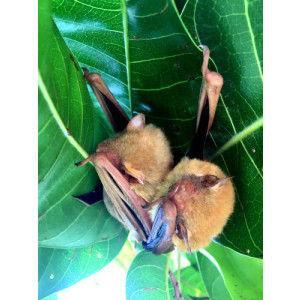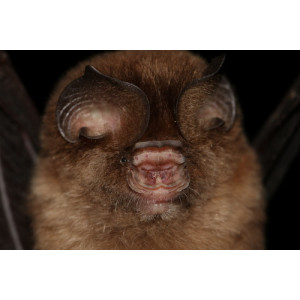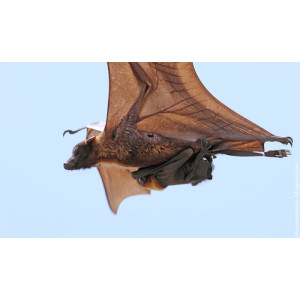@Jakob

Least Pipistrelle Did you see this animal?
Scientific Name : Pipistrellus tenuis
Family : Vespertilionidae
Order : Chiroptera
Class : Mammalia
Phylum : Chordata
Other Name : Indian Pygmy Bat
Habitat : Forest, Shrubland, Grassland
Description : Indian pygmy bat is the smallest bat species found in the region, with a total length of 5-6 cm and a wingspan of around 20 cm. They weigh between 2-5 grams, making them one of the smallest bat species in the world.
The Indian Pygmy bat has short, brownish-gray fur on its back and lighter fur on its belly. It has a small, narrow head with large, round ears and a pointed snout. The bat's wings are long and narrow, with a distinctive scalloped edge. Its wings are adapted for rapid and agile flight, which is necessary for catching insects on the wing.
Indian Pygmy bats are nocturnal and feed primarily on insects, such as mosquitoes, flies, and moths. They use echolocation to navigate and locate prey, emitting high-pitched sounds that bounce off objects and return as echoes. They can also detect the movement of insects using their sensitive ears.
These bats are found in a variety of habitats, including forests, urban areas, and agricultural landscapes. They roost in tree hollows, crevices in buildings, and other sheltered locations during the day. They typically form small colonies, with groups of up to 50 individuals roosting together.
Breeding occurs during the monsoon season, with females giving birth to a single pup each year. The young are born blind and naked, and rely on their mother's milk for nourishment until they are weaned and able to hunt on their own.
The Indian Pygmy bat is considered to be a species of least concern by the International Union for Conservation of Nature (IUCN). However, like many bat species, they face threats from habitat loss, disturbance of roosting sites, and the use of pesticides, which can reduce insect populations. Conservation efforts are needed to ensure the long-term survival of this fascinating and ecologically important species.
The Indian Pygmy bat has short, brownish-gray fur on its back and lighter fur on its belly. It has a small, narrow head with large, round ears and a pointed snout. The bat's wings are long and narrow, with a distinctive scalloped edge. Its wings are adapted for rapid and agile flight, which is necessary for catching insects on the wing.
Indian Pygmy bats are nocturnal and feed primarily on insects, such as mosquitoes, flies, and moths. They use echolocation to navigate and locate prey, emitting high-pitched sounds that bounce off objects and return as echoes. They can also detect the movement of insects using their sensitive ears.
These bats are found in a variety of habitats, including forests, urban areas, and agricultural landscapes. They roost in tree hollows, crevices in buildings, and other sheltered locations during the day. They typically form small colonies, with groups of up to 50 individuals roosting together.
Breeding occurs during the monsoon season, with females giving birth to a single pup each year. The young are born blind and naked, and rely on their mother's milk for nourishment until they are weaned and able to hunt on their own.
The Indian Pygmy bat is considered to be a species of least concern by the International Union for Conservation of Nature (IUCN). However, like many bat species, they face threats from habitat loss, disturbance of roosting sites, and the use of pesticides, which can reduce insect populations. Conservation efforts are needed to ensure the long-term survival of this fascinating and ecologically important species.
Distribution in Bangladesh
References:
description written by: Asad U. Tanvir, Department of Zoology, Jagannath University, Dhaka; reviewed by: Muntasir Akash, Department of Zoology, University of Dhaka; Taxonomic Checklist: Red List of Bangladesh Volume 2: Mammals, 2015, IUCN; information sources: iucnredlist.org, Khan 2018 (Photographic guide to the wildlife of Bangladesh), photo credit: jakob(www.inaturalist.org/people/leibele), photo copyright: iNaturalist. For more information please contact with us.
description written by: Asad U. Tanvir, Department of Zoology, Jagannath University, Dhaka; reviewed by: Muntasir Akash, Department of Zoology, University of Dhaka; Taxonomic Checklist: Red List of Bangladesh Volume 2: Mammals, 2015, IUCN; information sources: iucnredlist.org, Khan 2018 (Photographic guide to the wildlife of Bangladesh), photo credit: jakob(www.inaturalist.org/people/leibele), photo copyright: iNaturalist. For more information please contact with us.






































